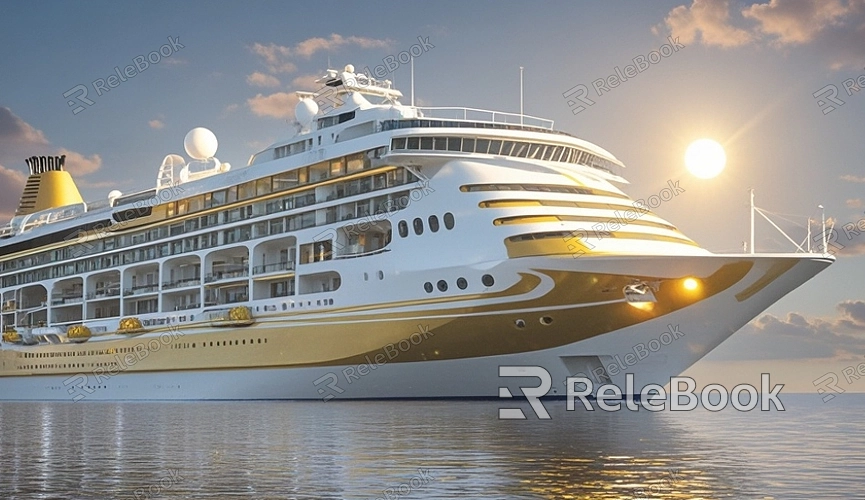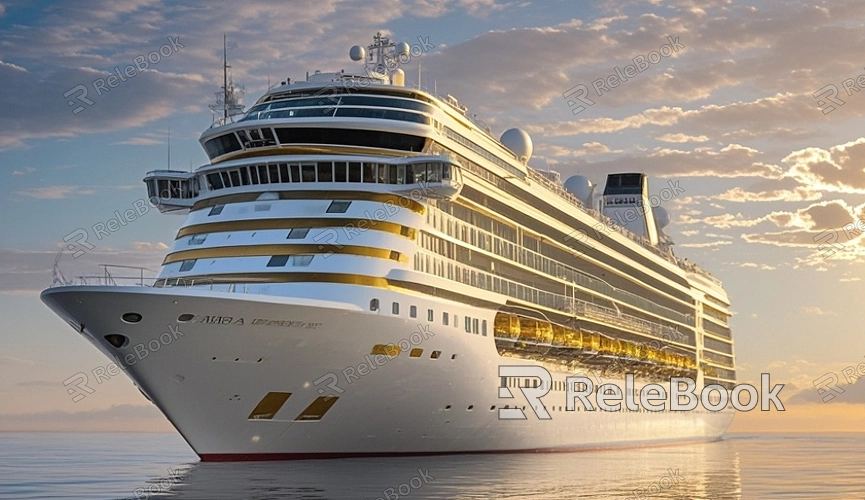How to Create a 3D Model of a Cruise Ship?
With the advancement of technology, 3D modeling has become a crucial tool in various design fields. This is especially true in the entertainment and engineering industries, where the demand for 3D models is ever-increasing. Creating a 3D model of a cruise ship, with its complex structure, poses a unique challenge. This article will provide a detailed guide on how to create a 3D model of a cruise ship, including the necessary tools, steps, and practical tips. By following these guidelines, you'll be able to master the basics of cruise ship modeling and enhance your modeling skills.

Preparation Phase
Before diving into the actual creation of a cruise ship 3D model, thorough preparation is essential. This includes researching the design and structure of cruise ships, gathering reference materials, and choosing the right modeling software.
1. Research Cruise Ship Design
Cruise ships are typically intricate structures with numerous details. To ensure accuracy in your model, start by studying design blueprints and photographs of cruise ships. You can find various images and design schematics online, which will help you understand the cruise ship’s appearance and internal layout.
2. Gather Reference Materials
Reference materials are crucial for the modeling process. In addition to design blueprints, collect photos of actual cruise ships and reference other 3D models if available. These materials will help you grasp the details and proportions better during the modeling process.
3. Choose Modeling Software
Selecting the right modeling software is key to creating your 3D model. There are many options available, such as Blender, Autodesk Maya, and 3ds Max. Each software has its features, so choose one that fits your needs and preferences.

Design and Modeling
After the preparation phase, the next step is the actual modeling process. This stage involves creating the basic structure of the model, adding details, and optimizing the model.
1. Create Basic Structure
Start by creating the basic structure of the cruise ship using your modeling software. Typically, you’ll begin with a simple geometric shape as the foundation. Gradually refine and modify this shape to form the overall outline of the cruise ship. At this stage, focus on getting the proportions and basic shapes right without worrying too much about the details.
2. Add Details
Once the basic structure is complete, you can begin adding details. This includes elements like the deck, cabins, and railings. By adding more geometric shapes and subdividing the model, you can enhance the cruise ship’s appearance. Ensure that the added details are consistent with the overall model.
3. Optimize the Model
Optimization is crucial to ensure that the model performs well during rendering. This involves reducing unnecessary polygons, smoothing surfaces, and adjusting UV maps. Optimizing your model improves its performance and ensures it runs smoothly across different platforms.
Texturing and Materials
With the modeling and detailing complete, the next step is to add materials and textures to the model. Materials and textures make the model look more realistic and vibrant.
1. Create Materials
Materials define the surface appearance of the model, including color, glossiness, and reflection properties. Use the material editor in your modeling software to create and adjust different materials. For a cruise ship, you might create metal materials for the hull and glass materials for the windows.
2. Create Textures
Textures are images applied to the surface of the model to add detail and complexity. You can create textures using painting tools or choose from existing texture libraries. Once created, these textures need to be mapped onto the model to display the desired details and effects.
3. UV Mapping
UV mapping involves applying textures to the model’s surface. By adjusting UV maps, you can ensure that textures are correctly placed and scaled on the model. Use the UV unwrap tool in your modeling software to convert the model’s surface into a 2D image and apply the textures to these unwrapped images.
Rendering and Post-Processing
The final step involves rendering and post-processing. Rendering converts the 3D model into 2D images or animations, while post-processing further refines the rendered results.
1. Set Up Rendering
Before rendering, you need to configure rendering settings such as lighting, camera angles, and resolution. Different settings will impact the quality and appearance of the final image. Adjust these parameters to achieve the best rendering results.
2. Post-Processing
After rendering, you can use image editing software for post-processing. This includes adjusting brightness, contrast, and color to enhance the visual appeal of the image. Post-processing can make the rendered image more dynamic and realistic.
Creating a 3D model of a cruise ship is a complex but rewarding process involving multiple steps from preparation and design to texturing and rendering. By mastering these fundamental techniques, you can produce detailed and realistic cruise ship models. We hope this guide helps you in your 3D modeling journey. For high-quality 3D models and textures, visit Relebook’s website to download what you need.
FAQ
How long does it take to create a 3D model of a cruise ship?
The time required to create a 3D model of a cruise ship depends on the model’s complexity and your level of experience. Simple models may take a few days, while more complex models could take weeks or even months.
Do I need to buy professional modeling software?
While some modeling software requires a purchase, there are also free options like Blender available. Choose software based on your needs and budget.
How can I improve my modeling skills?
Improving modeling skills involves practice, watching tutorials, and studying other models. Engaging with relevant communities and forums can also provide valuable resources and feedback.
What can completed 3D models be used for?
Completed 3D models can be used in various applications such as game development, animation, and virtual reality experiences. The specific use depends on the model's detail and quality.

